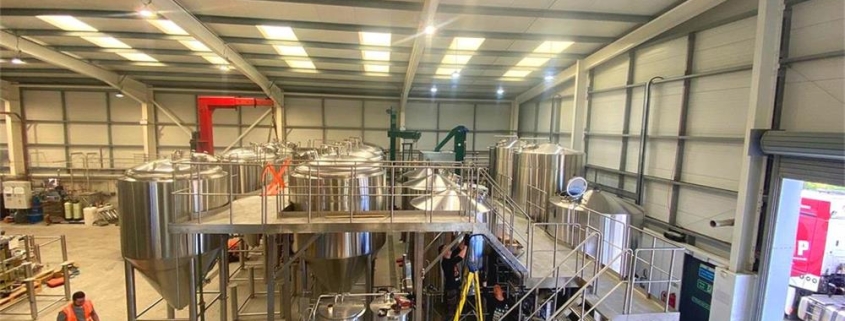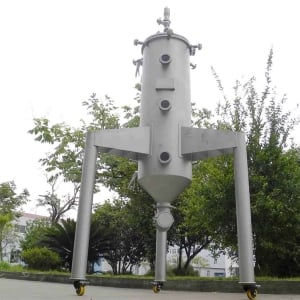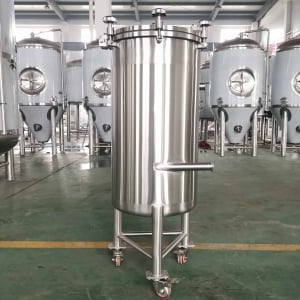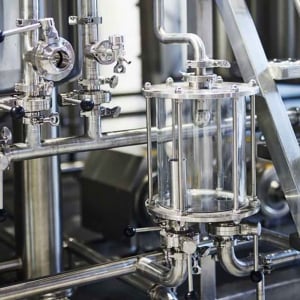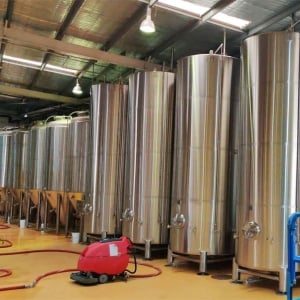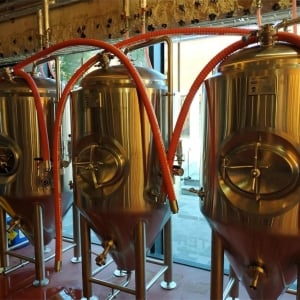Commercial Brewing Equipment
Starting a commercial brewery is a big step into the world of craft brewing, and the right commercial brewing equipment can make all the difference. Whether you’re a seasoned brewer expanding your operations or someone just entering the industry, the process of selecting and setting up brewing equipment can feel overwhelming. With so many factors to consider—costs, capacity, customization, and suppliers—it’s essential to understand the full picture.
In this article, we’ll break down everything you need to know about commercial brewing equipment, from understanding the various types of equipment, costs involved, and the brewing process, to comparing suppliers and installation considerations. By the end, you’ll be equipped with the knowledge to make informed decisions and take your brewing venture to the next level.
Overview: Key Details of Commercial Brewing Equipment
Commercial brewing equipment refers to the specialized machinery used in the production of beer at a larger scale, typically for distribution to bars, restaurants, or retail. The equipment required ranges from basic fermenters and mash tuns to more advanced systems for bottling, kegging, and distribution.
Brewing at a commercial level involves higher production volumes, greater precision, and more complex machinery compared to homebrewing. Choosing the right system depends on your production goals, space availability, and budget.
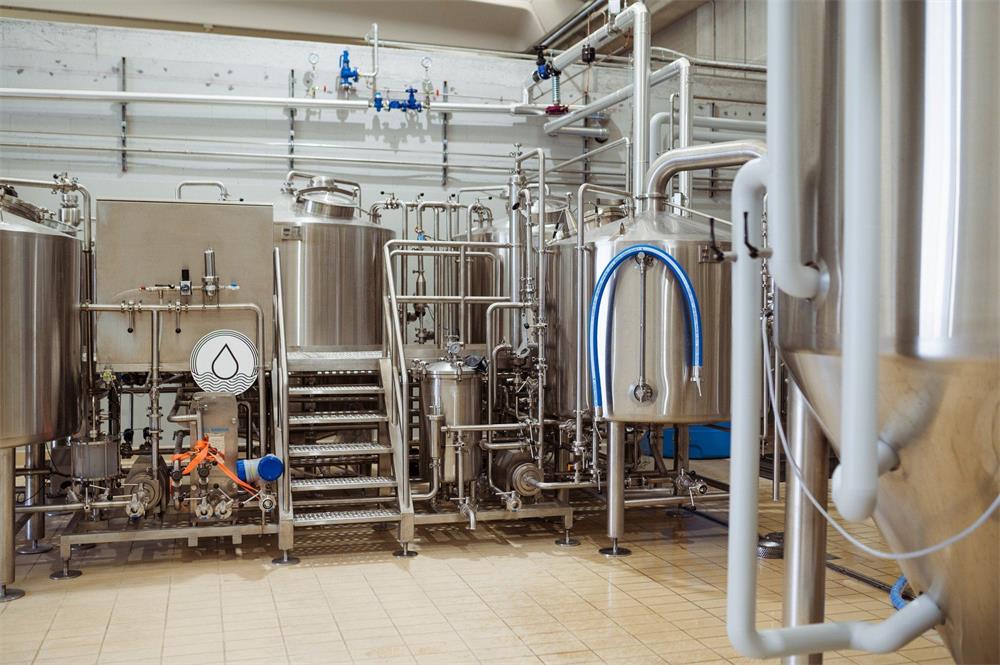
Equipment Guide for Commercial Brewing
Key Brewing Equipment for a Commercial Brewery
When setting up a brewery, there are several key pieces of equipment that you’ll need. Let’s take a closer look at each one:
- Mash Tun: This is where the mashing process occurs, converting starches into fermentable sugars. The size of the mash tun determines the volume of beer you can produce in each batch.
- Lauter Tun: This equipment separates the liquid wort from the spent grains. It’s crucial for ensuring efficient extraction of sugars.
- Brew Kettle: The brew kettle is where the wort is boiled, and hops are added to impart bitterness and flavor. It needs to be equipped with temperature control for precision.
- Fermenters: After boiling, the wort is transferred to fermenters, where yeast is added. Fermenters come in various sizes, depending on your production scale.
- Heat Exchanger: This cools down the wort after boiling, preparing it for fermentation.
- Bright Tanks: These tanks hold the beer after fermentation and allow it to clarify before packaging.
- Kegging and Bottling Lines: Once the beer is ready, it’s either kegged or bottled for distribution. Automated systems speed up this process.
Types of Commercial Brewing Equipment: Details and Comparison
| Type of Equipment | Function | Key Features | Capacity Range | Price Range |
|---|---|---|---|---|
| Mash Tun | Converts starches into sugars | Size, temperature control, insulation | 3-100+ barrels | $10,000 – $50,000 |
| Lauter Tun | Separates wort from grains | Grating system, filtration efficiency | 3-100+ barrels | $8,000 – $40,000 |
| Brew Kettle | Boils wort and adds hops | Temperature control, steam or direct fire heating | 3-100+ barrels | $12,000 – $60,000 |
| Fermenters | Fermentation vessel for beer | Stainless steel, cooling jackets | 5-200+ barrels | $15,000 – $100,000 |
| Heat Exchanger | Cools wort before fermentation | Plate or tube design | Varies | $2,000 – $15,000 |
| Bright Tanks | Clarifies beer before packaging | Pressure-rated, temperature-controlled | 5-200+ barrels | $8,000 – $50,000 |
| Kegging/Bottling Lines | Packages beer for distribution | Automated, manual options available | Varies | $20,000 – $100,000 |
The Brewing Process with Commercial Brewing Equipment
Now that we’ve covered the equipment, let’s explore how it all comes together in the brewing process. Each step is crucial, and the equipment plays a key role in ensuring quality and efficiency.
1. Mashing
The brewing process starts with mashing, where malted grains are mixed with hot water in the mash tun. The heat activates enzymes in the malt, breaking down the starches into fermentable sugars. The temperature and timing of this step are critical, as they influence the flavor and body of the beer.
2. Lautering
Once mashing is complete, the wort (sugar-rich liquid) needs to be separated from the spent grains. This happens in the lauter tun, where the liquid is drained off, leaving behind the grain husks. The wort is then rinsed (sparged) to extract any remaining sugars.
3. Boiling
The wort is transferred to the brew kettle, where it’s boiled for sterilization and to concentrate the sugars. Hops are added during this phase to impart bitterness, flavor, and aroma. The duration of the boil and the type of hops used will affect the final beer profile.
4. Cooling and Fermentation
After boiling, the hot wort must be rapidly cooled to a temperature suitable for fermentation. This is done using a heat exchanger. Once cooled, the wort is transferred to fermenters, where yeast is added. The yeast consumes the sugars, producing alcohol and carbon dioxide.
5. Conditioning and Packaging
Once fermentation is complete, the beer is conditioned in bright tanks. This is where it clarifies and matures, developing its final flavors. After conditioning, the beer is ready to be kegged or bottled for distribution.
Commercial Brewing Equipment: Capacity, Space, Design, and Layout
When setting up a brewery, it’s important to consider your available space and how the equipment will fit. Commercial brewing equipment is available in a variety of sizes, and your choice will depend on your production goals and the size of your facility.
| Factor | Details |
|---|---|
| Capacity | Commercial brewing equipment ranges from small 3-barrel systems for brewpubs to large 100+ barrel systems for production breweries. |
| Space Requirements | Equipment requires significant space for installation, including room for maintenance and future expansion. Be mindful of ceiling height, floor load-bearing capacity, and ventilation. |
| Design/Layout | A well-designed layout ensures efficient workflow, from ingredient storage to brewing and packaging. Consult with an architect or brewery planner to maximize space. |
| Customization | Many suppliers offer customizable brewing systems to meet specific needs. This can include adding extra fermenters, automated control systems, or custom branding. |
Suppliers and Price Range for Commercial Brewing Equipment
There are numerous suppliers of commercial brewing equipment, each offering different levels of customization, quality, and pricing. Below is a comparison of some of the leading suppliers in the industry.
| Supplier | Country | Price Range | Customization Options | Notable Clients |
|---|---|---|---|---|
| BrewTech | USA | $50,000 – $500,000 | Full system customization | Local craft breweries |
| Ss Brewtech | USA | $20,000 – $300,000 | Modular systems | Microbreweries |
| Deutsche Beverage | USA | $100,000 – $1,000,000 | Custom brewery design | Large breweries |
| Caspary | Germany | $80,000 – $800,000 | High-end customization | High-volume breweries |
| Bespoke Brewing | China | $30,000 – $250,000 | Economical options | Small to medium-size breweries |
Installation, Operation, and Maintenance of Brewing Equipment
| Aspect | Details |
|---|---|
| Installation | Installation typically requires specialized contractors familiar with brewery equipment. Depending on the complexity, it can take weeks or months. Ensure that electrical, plumbing, and ventilation systems are adequately prepared. |
| Operation | While many systems have automated controls, manual intervention is often required for monitoring and adjustments. Operator training is essential to ensure smooth operations. |
| Maintenance | Regular maintenance includes cleaning tanks, replacing seals and gaskets, and ensuring that cooling systems are functioning properly. Equipment suppliers often offer maintenance packages, but in-house staff can also be trained. |
How to Choose a Supplier for Commercial Brewing Equipment
Choosing the right supplier is crucial for long-term success. You’ll need to weigh several factors, from cost to customer service and warranties.
| Factor | What to Consider |
|---|---|
| Price | Compare quotes from multiple suppliers, but don’t compromise on quality for lower prices. A more expensive system might have lower long-term maintenance costs. |
| Quality | Research the materials used in construction. Stainless steel is the standard for durability and hygiene. |
| Lead Time | Ensure that the supplier’s lead time fits with your timeline for starting production. Delays in delivery can significantly affect your business plans. |
| Customer Service | Does the supplier offer comprehensive support, including installation, training, and maintenance? A supplier with strong customer service can save you headaches down the line. |
| Warranty | Make sure the equipment comes with a solid warranty, covering not just parts but also labor. |
Pros and Cons of Commercial Brewing Equipment: Advantages and Limitations
| Factor | Advantages | Limitations |
|---|---|---|
| Cost | High-end systems offer better efficiency and reliability | Upfront cost is a significant investment |
| Scalability | Larger systems allow for increased production capacity | Large systems require more space and infrastructure |
| Automation | Automation can reduce labor costs and increase consistency | Automated systems can be complex and require specialized staff |
| Customization | Custom systems can be tailored to your specific brewing needs | Customization often leads to longer lead times and higher costs |
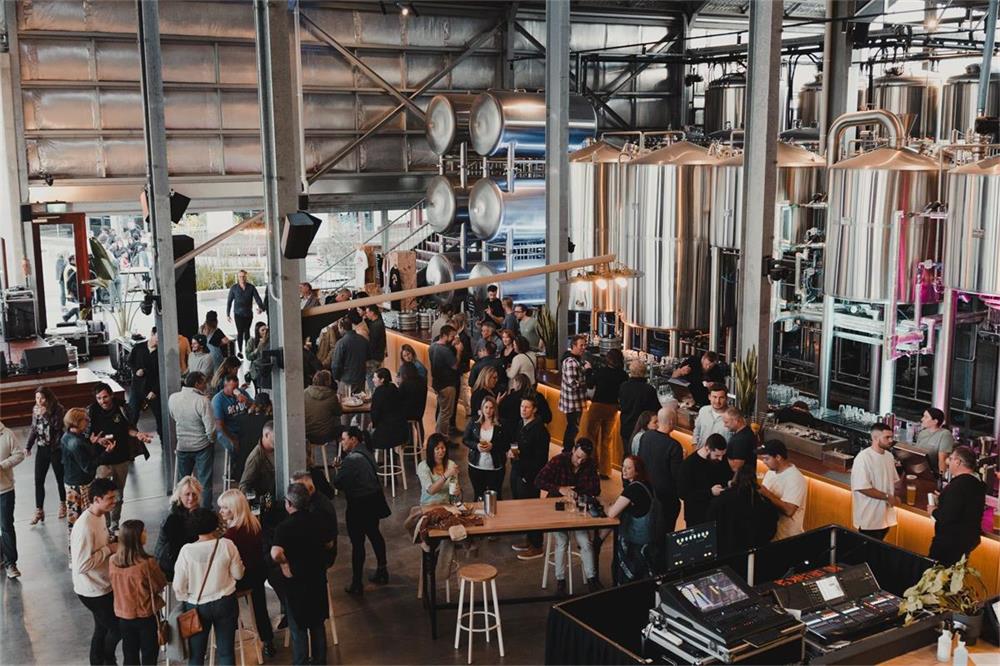
FAQs
| Question | Answer |
|---|---|
| What size brewing system should I start with? | This depends on your production goals. Small brewpubs may start with a 3-5 barrel system, while larger operations might need 20-50 barrels. |
| Can I expand my brewing system later? | Yes, many systems are modular and can be expanded as your production needs grow. |
| How long does it take to install brewing equipment? | Installation timelines vary, but it generally takes several weeks to a few months, depending on system complexity. |
| What is the cost of maintaining commercial equipment? | Maintenance costs vary but typically include cleaning supplies, replacement parts, and occasional professional servicing. |
| How do I choose the right supplier? | Consider factors such as price, quality, lead time, and customer service. It’s also helpful to speak with other brewers who have used the supplier. |
Final Thoughts on Commercial Brewing Equipment
Starting a commercial brewery is an exciting and challenging venture, and selecting the right brewing equipment is a critical step. While the upfront costs can be high, investing in quality equipment can save you time and money in the long run. From choosing the right supplier to understanding the brewing process, this guide has hopefully provided you with a clear roadmap to set up your brewery for success. Whether you’re just starting or expanding your production, remember that your brewing equipment is the backbone of your operation—so choose wisely!

